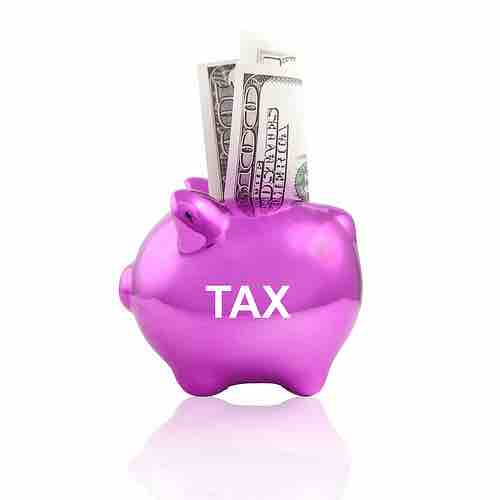Other Current Liabilities
Sales Tax Payable
The sales and use tax is a tax paid to a governing body by a seller for the sales of certain goods and services. The payment of the tax by the seller occurs periodically and varies depending on the jurisdiction. Usually laws allow (or require) the seller to collect funds for the tax from the consumer at the point of purchase. Laws may allow sellers to itemized the tax separately from the price of the goods or services, or require it to be included in the price (tax-inclusive). The tax amount is usually calculated by applying a percentage rate to the taxable price of a sale. Sales tax payable can be accrued on a monthly basis by debiting sales tax expense and crediting sales tax payable for the tax amount applicable to monthly sales. The sales tax payable account is reported in the current liability section of the balance sheet until the tax is paid.

A company can incur different types of tax liabilities.
Taxes, employee salaries, and customer advances that will be payable or earned within a 12-month period can be reported as current liabilities.
Income Tax Payable
Income tax is a tax levied on the income of individuals or businesses (corporations or other legal entities). Corporate tax refers to a direct tax levied on the net earnings made by companies or associations and often includes the capital gains of a company. Net earnings are generally considered gross revenue minus expenses. Expenses can vary; for example, corporate expenses related to fixed assets are usually deducted in full over their useful lives by using percentage rates based on the class of asset to which they belong. Accounting principles and tax rules about recognition of expenses and revenue will vary at times, giving rise to book-tax differences. If the book-tax difference is carried over more than a year, it is referred to as a deferred tax. Future assets and liabilities created by a deferred tax are reported on the balance sheet. Income tax payable can be accrued by debiting income tax expense and crediting income tax payable for the tax owed; the payable is disclosed in the current liability section until the tax is paid.
Salaries and Wages Payable
Wages and salaries in cash consist of wages or salaries payable at regular weekly, monthly, or other intervals, including payments by results and piecework payments, plus allowances like:
- working overtime;
- amounts paid to employees away from work for short periods (e.g., on holiday);
- ad hoc bonuses and similar payments;
- commissions, gratuities and tips received by employees.
Customer Advances (Deferred Revenue)
Deferred revenue is, in accrual accounting, money received for goods or services that have not yet been delivered and revenue on the sale has not been earned. According to the revenue recognition principle, the deferred amount is recorded as a liability until delivery is made, at which time it is converted into revenue. An example of a typical customer advance is the receipt of an annual maintenance contract fee, where the entire contract is paid up front. The receipt of $12,000 for the annual maintenance contract is initially recorded as deferred revenue. As the maintenance service is rendered and a portion of the fee is earned, $1,000 is recognized periodically each month as revenue and the deferred revenue account is reduced.